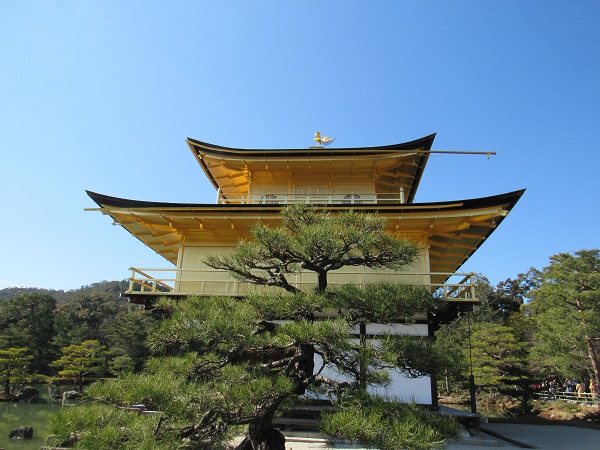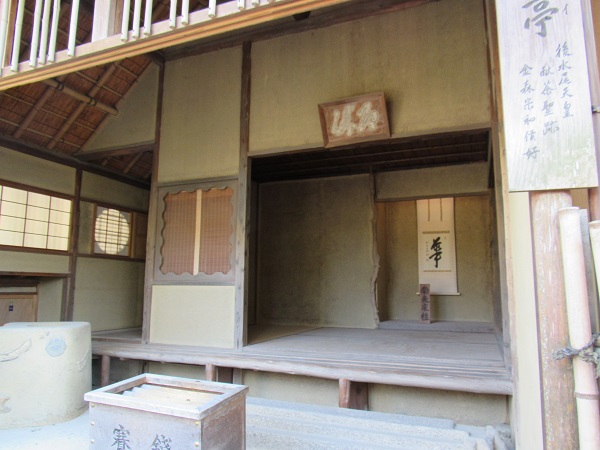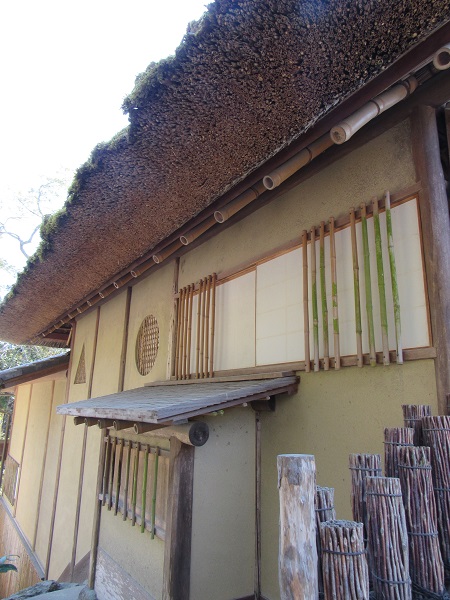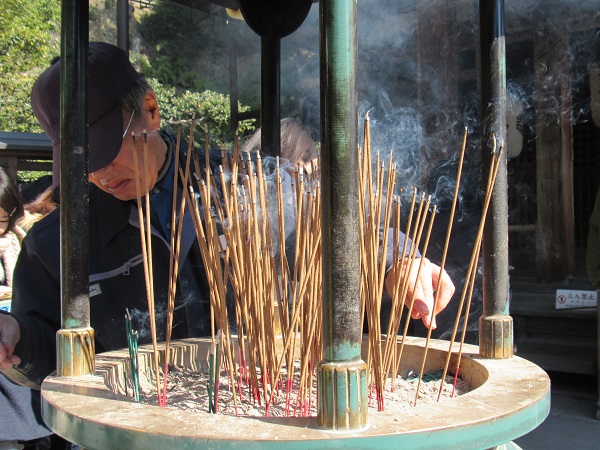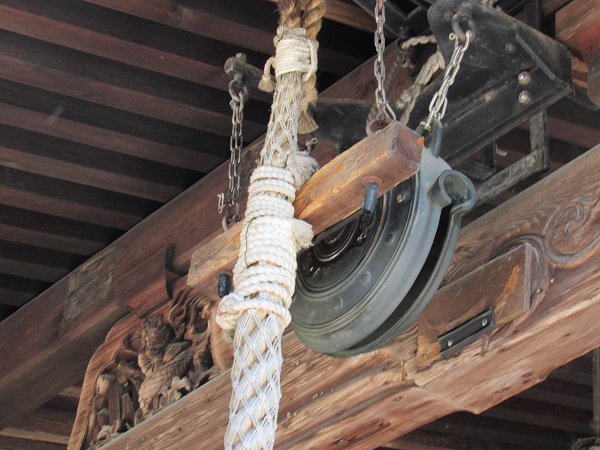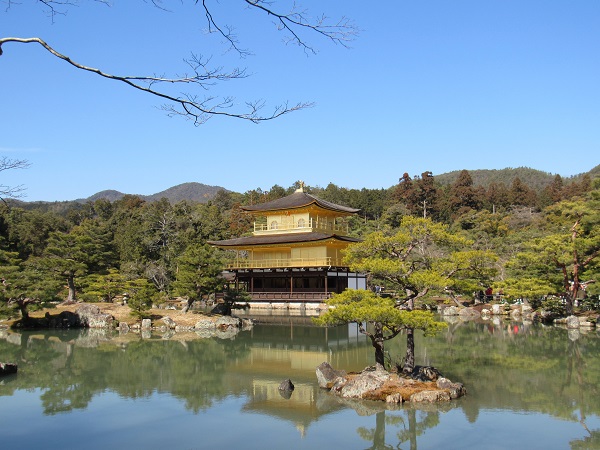
Kyoto Chronicles: Kinkakuji, The Golden Pavillion
- Details
- Written by Guendalina Fanti

Kyoto is well known for its unpredictable weather, one moment it could be sweltering hot and the next go below freezing. I was harshly reminded of this last Thursday, as I left my house sweating under a scarf and cap, just to come back home chilled to the bone.
It was still worth it, as it had been a good sightseeing day: I went with some friends to the Kinkakuji first, then Nijō castle and Kiyomizudera, and finally to my shōdo course. And I also learned how to flip okonomiyaki! Before all that, however, I spent the morning in a maze of rabid tourists and selfie sticks - though I must admit I was not blameless, as I also rushed to get a nice spot from where to snap a few pics.
What’s the Kinkakuji?
We can figure it out by looking at the kanji: 金 kin = gold, 閣 kaku = palace and 寺 ji = Buddhist temple. So, pretty much a golden building that is also a temple The picture should make it clearer.
The real name of the temple is actually Rokuon, as the golden pavillion is only one of the buildings on the actual temple grounds. There is a lake by the golden pavilion, a bamboo house where souvenirs are sold, a structure where one can watch (by booking) a traditional tea ceremony, and of course an altar where one can pray and give offerings.
The Pavilion
The pavilion was erected by shogun Ashikaga Yoshimitsu in 1397 as a residence for visiting nobles. According to his will, it was converted into a temple after his death. The Muromachi era was characterized by close ties between Japan and China, and the pavilion testifies the cultural influence of the latter on the former: the first floor was reserved for aristocrats, the second for military leaders, and the third was built according to the Chinese Buddhist style (zenshū butsuden zukuri). Gold leaf covers all four sides, and a golden phoenix observes visitors, perched atop the the roof.
Yet, the structure before us was erected in 1955! The original building was destroyed by a monk, so obsessed by the temple that he decided to burn it to the ground in 1950. In five years the pavilion was rebuilt and all floors where covered in gold (originally, only the lowest floor had this feature).
Sekkatei: tea house
Further on the left, beyond the pavilion, there are some public bathrooms (always available in Japan!); then, going up a stone staircase, we reach an old tea house. Contrasting with the luxurious look of the pavilion, here we find nothing more than what’s strictly necessary: tatami, a stone with a hole functioning as a stove, and a tiny window from where to look at the scenery outside.
This tea house is no longer used today, and it’s only for show: to actually see a tea ceremony, we have to keep going a little longer.
Fudōdō
If you’re more interested in the spiritual side of things, rather than souvenirs and desserts, the temple holds a stone image of Buddha that is only visible during setsubun (the Japanese new year). As the pictures show, you can pull the rope even if you cosplay as a cat.
You can pull the rope and recite a Japanese-style prayer, clapping hands or inhaling the smoke from an incense stick.
On the way out we find a few sweets stands, ready to satisfy the cravings of any tourist. I tried a wasabi cookie, but it was so spicy I had to eat something else just to forget the taste.
Finally, tired from the tour and the sudden heat, we filled ourselves with some okonomiyaki: eggs, meat, vegetable and sauce at will! So tasty!





